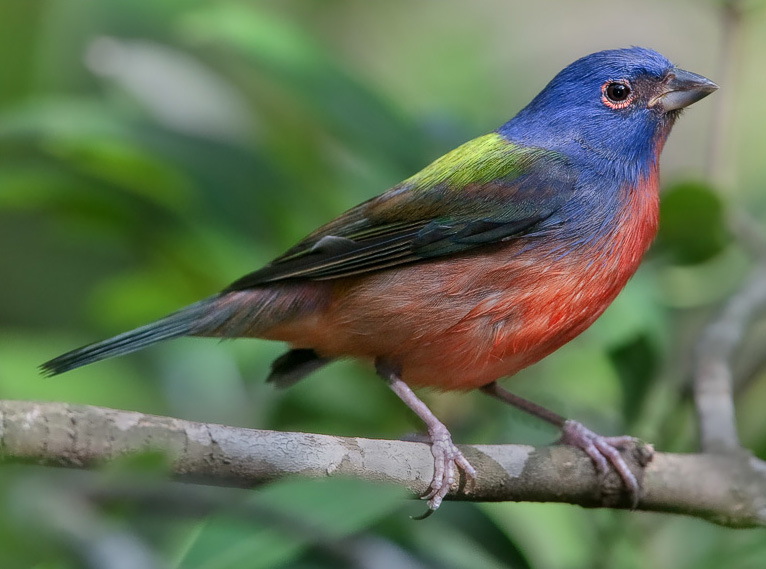Sorting through the scores of bird interest websites can be very taxing, so I thought I’d highlight some especially good ones here (listed in alphabetical order).
Budgerigar Websites
While most clubs and societies focus on English Budgerigars, which differ a bit from the race more familiar in the USA (please see the article referenced below), English Budgerigar husbandry and natural history information will be useful to all Budgerigar owners.
Budgerigar Society
Based in the UK, the Budgerigar Society was founded in 1925 and boasts over 3,000 members – quite a reserve of expertise!
In addition to hosting exhibitions and providing a wealth of information on show standards and related matters, the society is committed to disseminating health, husbandry and conservation news, and does a fine job of it. The posted research articles, many written by recognized experts, are top-notch. The new Budgerigar owner, however, should not shy away – a series of wonderful articles for beginners is also available.
Great Western Budgerigar Society
Founded in 1952, this US-based society is one of the largest devoted solely to the care and exhibition of Budgerigars, and promotes the advancement of both scientific research and practical husbandry techniques.
It is well-known for hosting some of the country’s most popular shows…one of these, which featured over 1,300 Budgies, was the largest ever held in the USA. I was particularly pleased to find wonderful photos of the various Budgerigar color types and printable Nest Box and Egg Log Cards.
World Budgerigar Organization
This international organization does a fine job of bringing together Budgerigar experts and enthusiasts from all over the world – governments should cooperate half as well!
At least 21 countries, including the USA, are well-represented. I especially admire the group’s efforts in funding the translation and dissemination of important research articles. Budgerigar show standards and conservation-oriented lobbying are also high priorities.
Cockatiel Websites
National Cockatiel Society
Now in its 25th year, the National Cockatiel Society is a great resource for aviculturists seeking information on any aspect of Cockatiel care or exhibition.
The website’s library is one of the most impressive I’ve seen, with many of the posted articles having applicability to other parrot species as well. Specific interest areas, such as those for breeders and exhibitors, assure that no site visitor will leave unsatisfied.
North American Cockatiel Society
In contrast to many Cockatiel interest groups, the North American Cockatiel Society focuses its efforts on pet care as opposed to exhibition (however, the well-researched information on Cockatiel genetics and mutations will prove of interest to both pet owners and those who exhibit birds).
I was happy to see that fact and fun strike an excellent balance on this website – the articles are well-written and informative, and the “Just for Fun” section is most entertaining. The “Frequently Asked Questions/Tips” feature covers just about all one might need to know when getting started in keeping cockatiels, while a chat-room and “Cockatiel of the Month” photo serve to liven up the visitor’s experience.
Further Reading
The race of birds that has come to be known as “English Budgerigars” is larger (and, some say, quieter – apartment dwellers take note!) than the Budgerigars more typically seen in the USA. Please see my article The English Budgerigar for more information.
The Cockatiel’s life in the wild is less well-known than is its captive care, but very interesting. To read about Cockatiel natural history, please see The Cockatiel in Nature.
 That Bird Blog – Bird Care and History for Pet Birds
That Bird Blog – Bird Care and History for Pet Birds

 Conures in the genus Aratinga are often suggested as birds to purchase for those who wish to keep macaws but lack experience (Aratinga means “little macaw”). Brilliantly colored but quite loud and with an indomitable spirit, conures do indeed resemble their larger cousins in many ways. Most do best in
Conures in the genus Aratinga are often suggested as birds to purchase for those who wish to keep macaws but lack experience (Aratinga means “little macaw”). Brilliantly colored but quite loud and with an indomitable spirit, conures do indeed resemble their larger cousins in many ways. Most do best in  Two distinct populations of Painted Buntings range from North Carolina south through Florida to Cuba and other Caribbean islands and from northern Texas to Mexico.
Two distinct populations of Painted Buntings range from North Carolina south through Florida to Cuba and other Caribbean islands and from northern Texas to Mexico. The plumage of male Painted Buntings typically fades in captivity. The most brilliantly colored specimens that I have seen in zoos have been fed a diet rich in live insects, including wild caught species. The provision of natural sunlight or the use of a
The plumage of male Painted Buntings typically fades in captivity. The most brilliantly colored specimens that I have seen in zoos have been fed a diet rich in live insects, including wild caught species. The provision of natural sunlight or the use of a